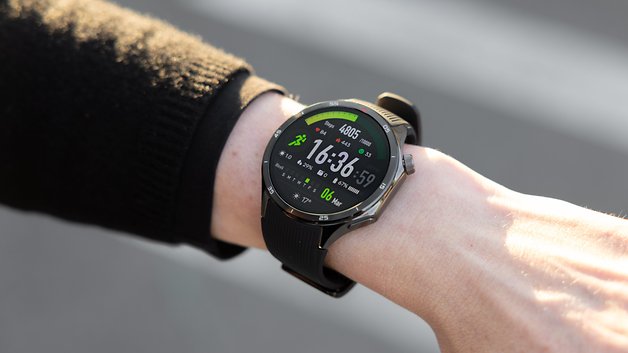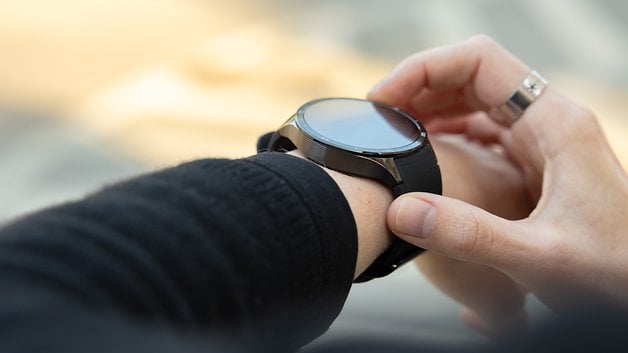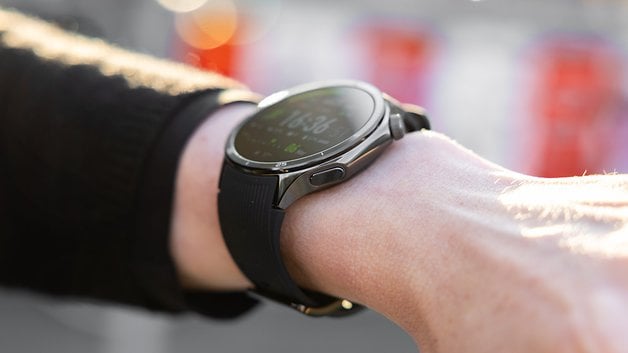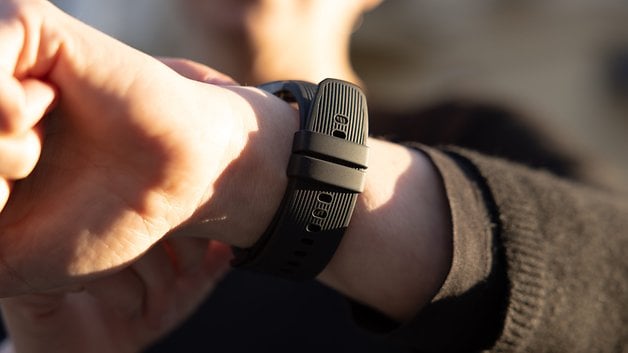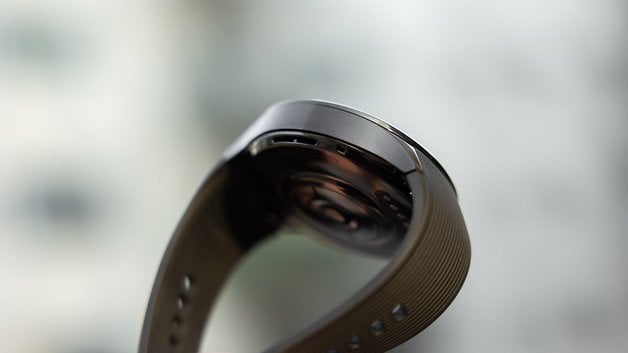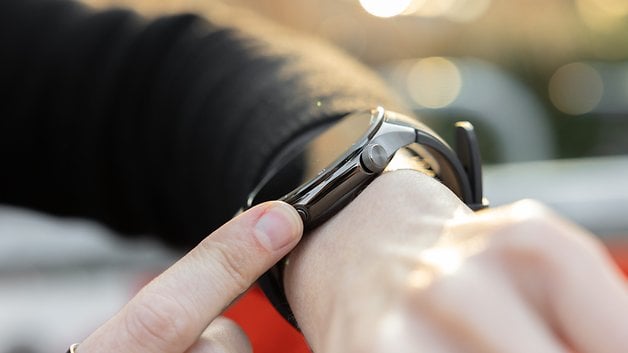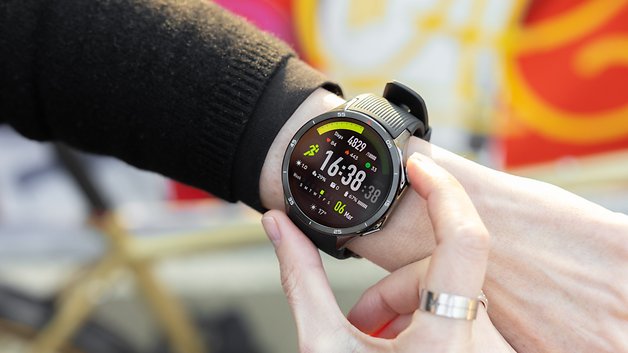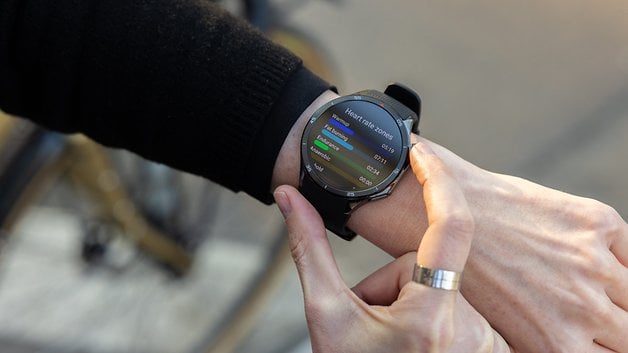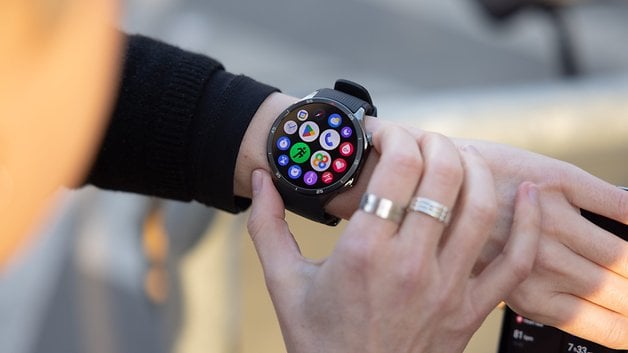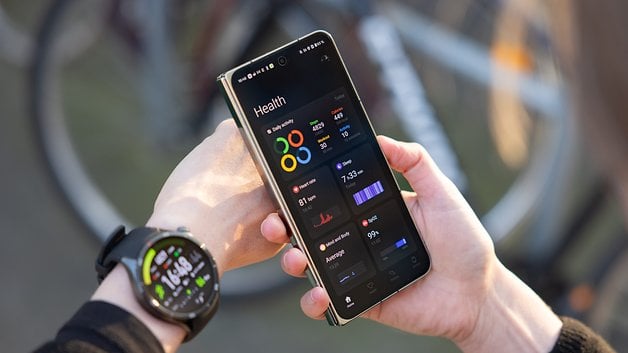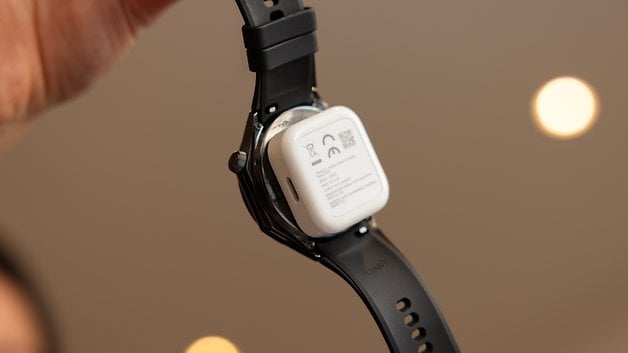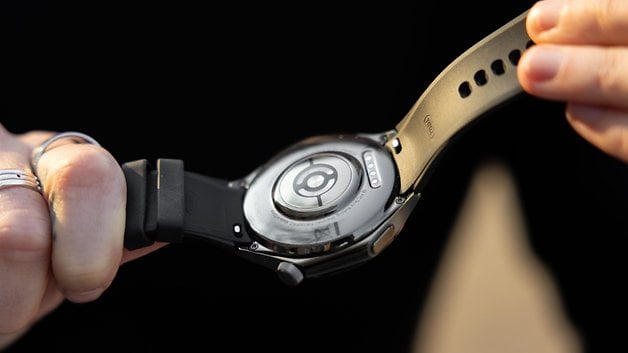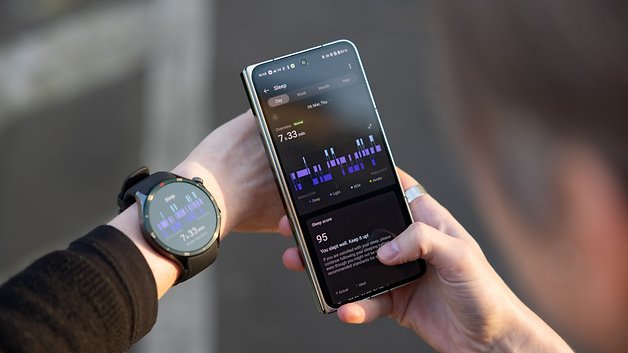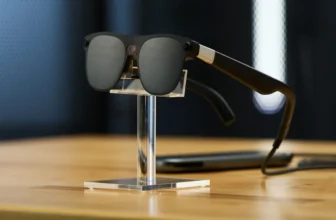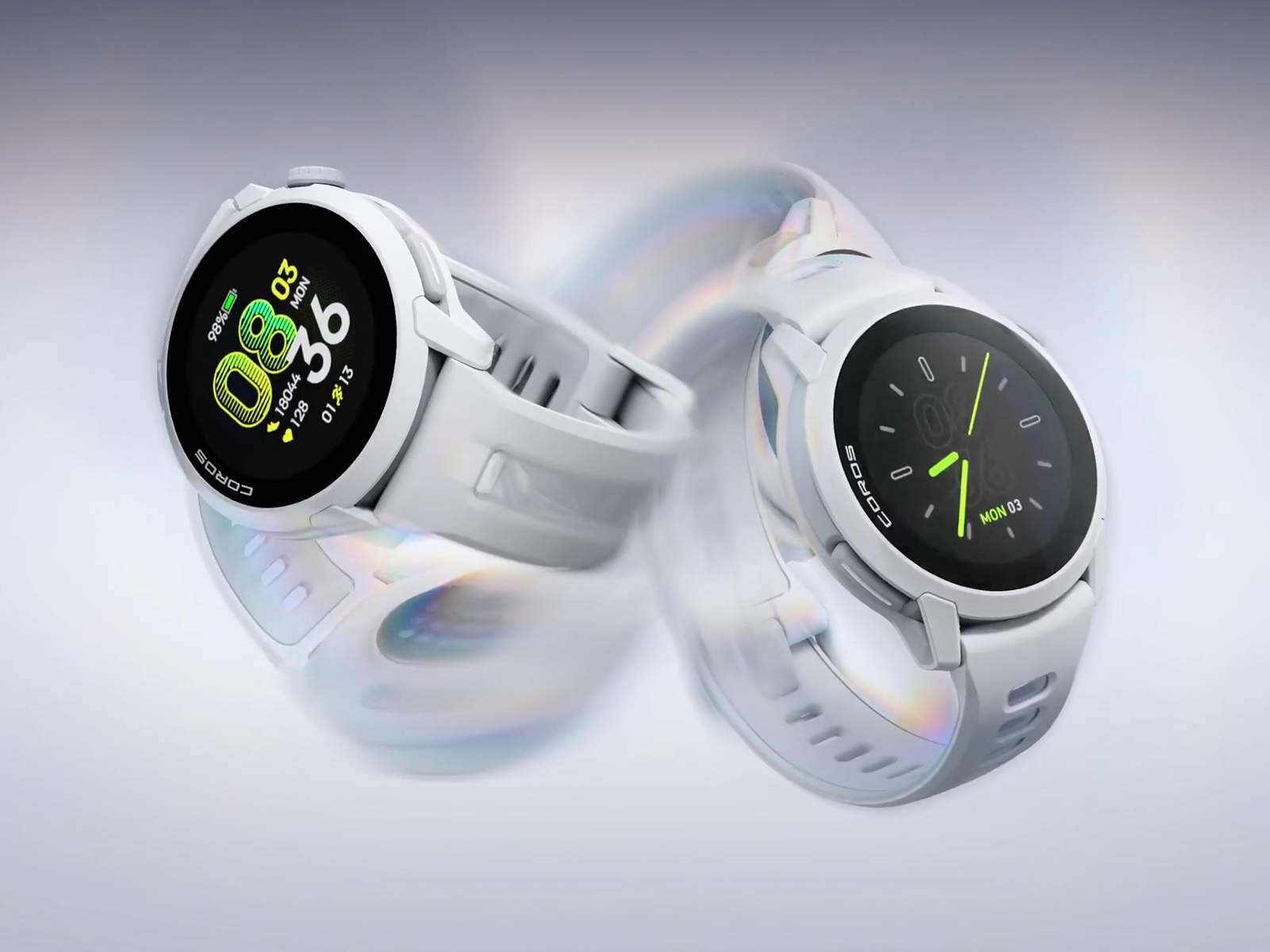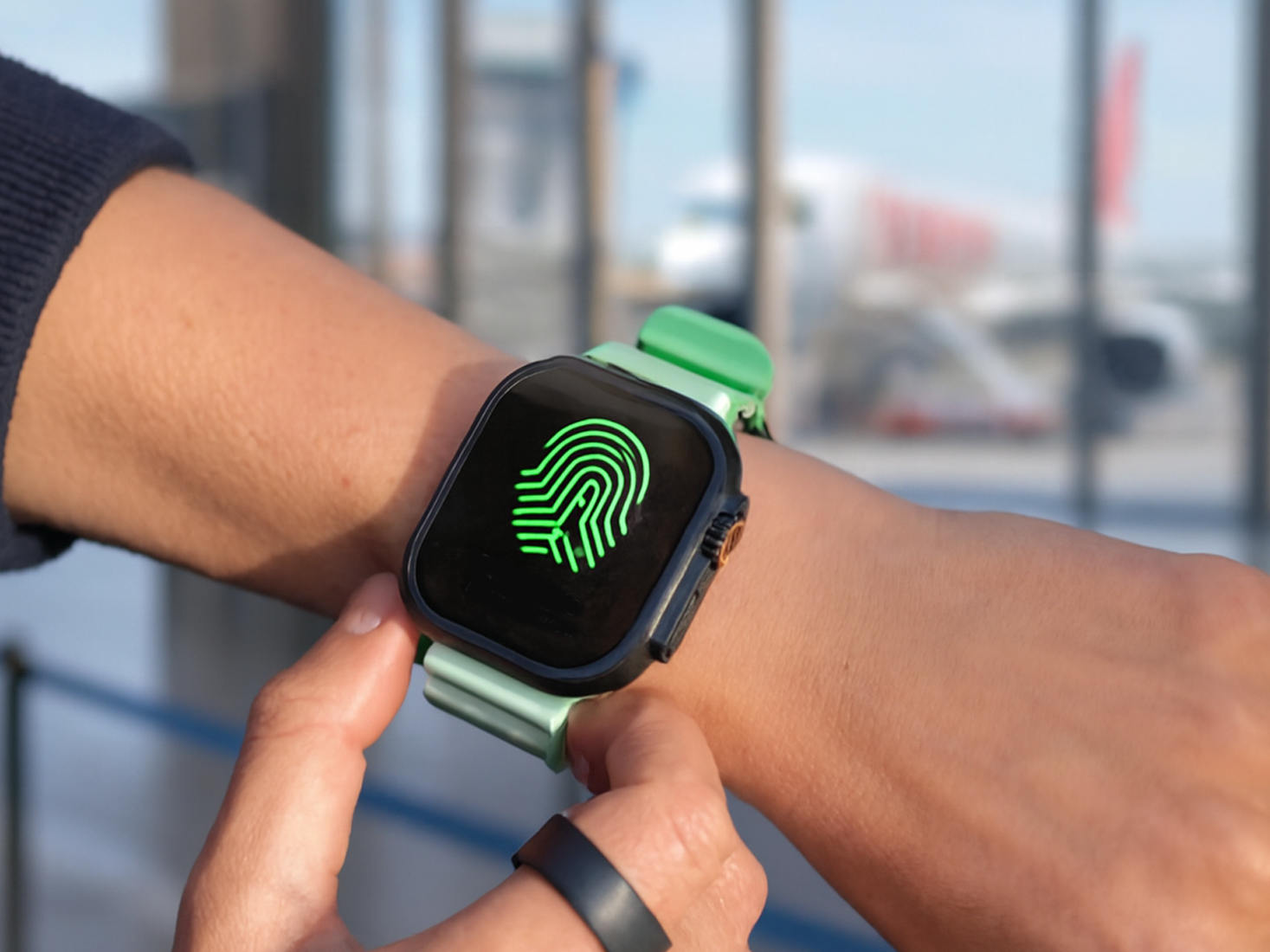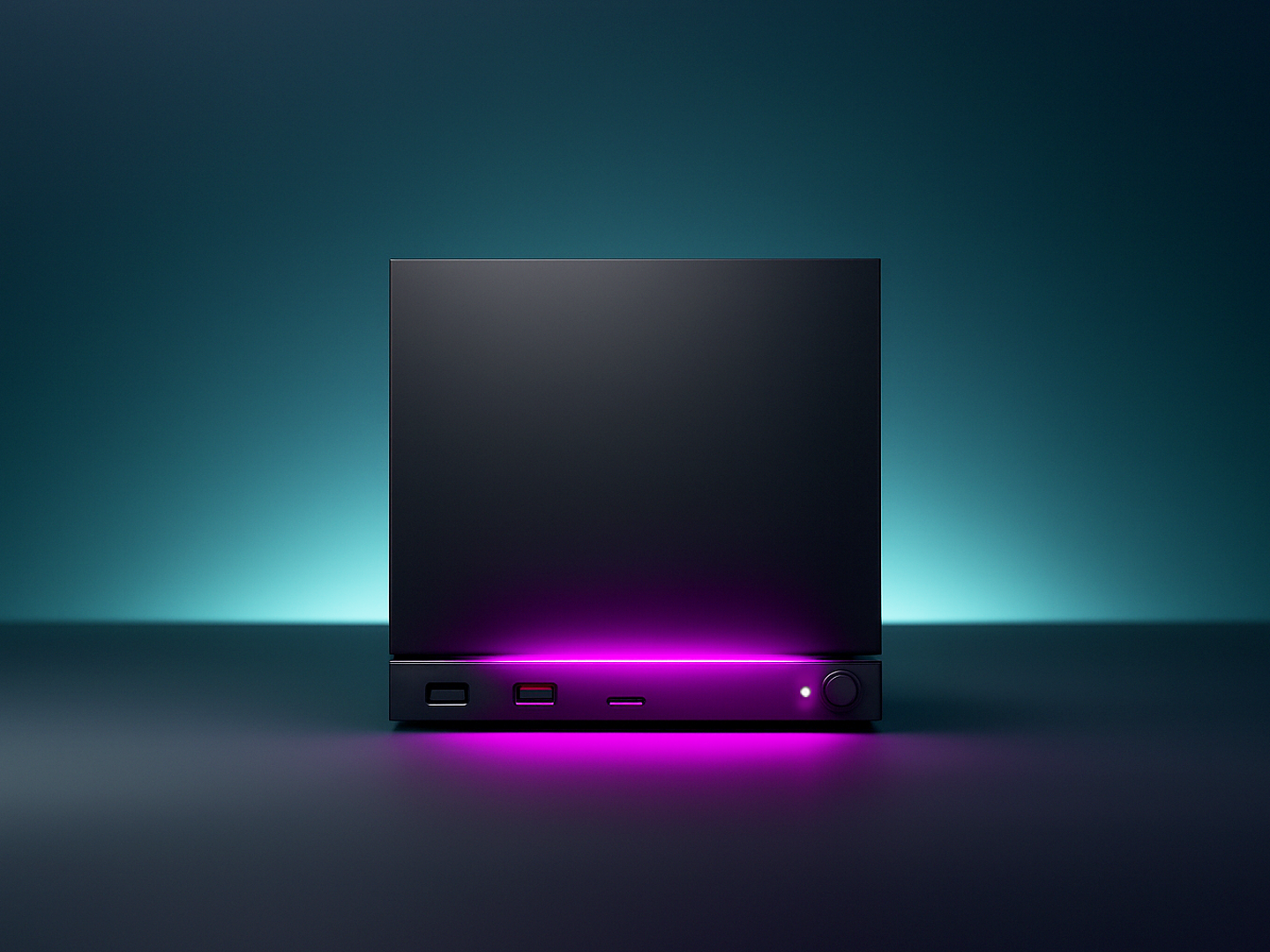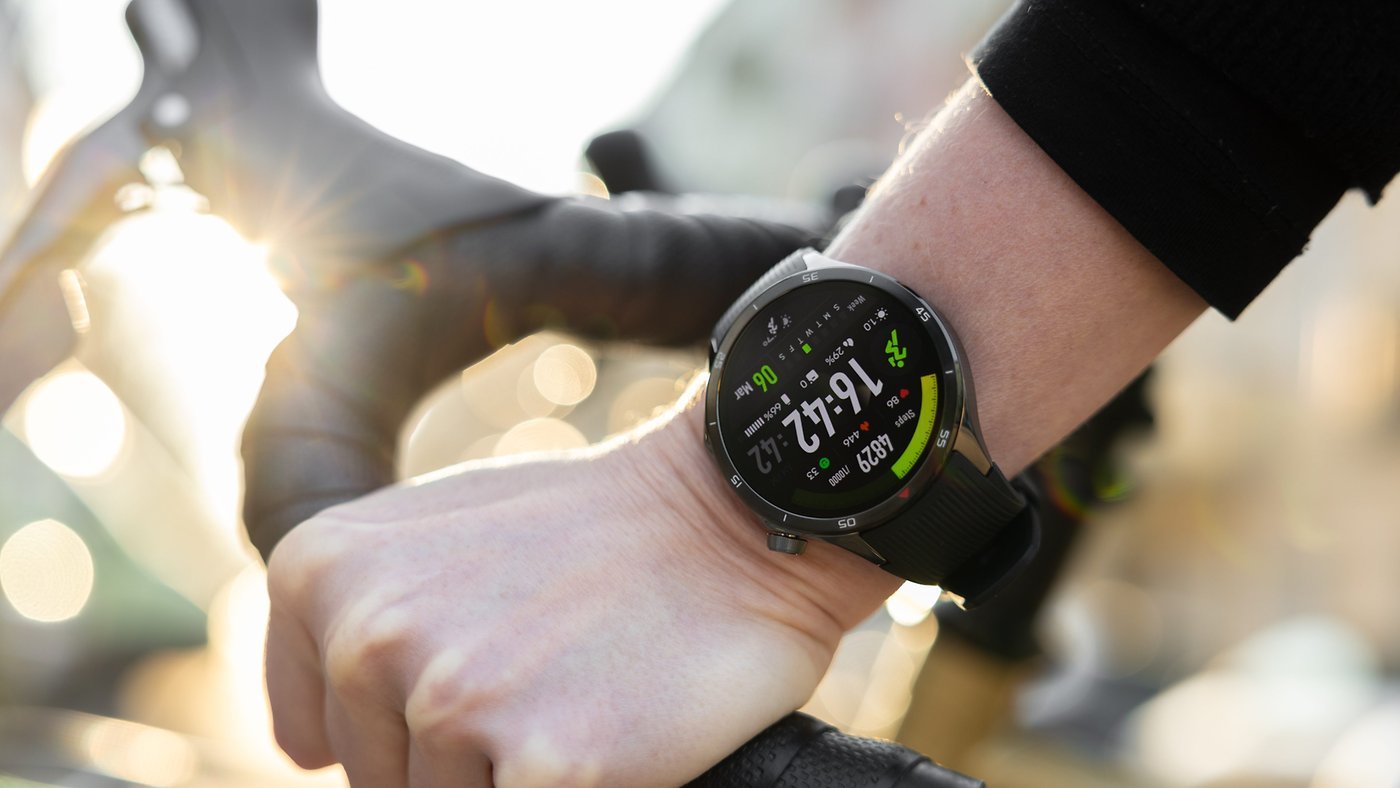
The OnePlus Watch 3 is the kind of consumer smartwatch we all deserve—but unfortunately, not everyone can have it. Despite offering plenty of impressive features and solid hardware, it has notable limitations that may hold it back. Yet, the Watch 3 might just be a blueprint for the next generation of smartwatches, and in this review, I’ll explain exactly why.
Good
- Unique, original design
- Excellent display readability
- Seamless integration with Google apps
- Innovative hybrid interface
- Exceptional battery life
Bad
- Available only in one size (47 mm)
- No compatibility with iOS
- Lacks native menstrual cycle tracking
- ECG feature unavailable in the US and Canada
- No LTE option available
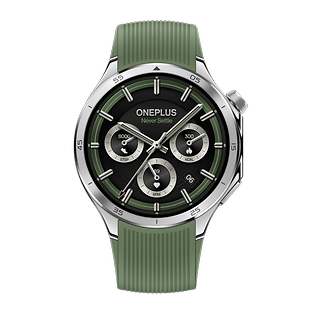
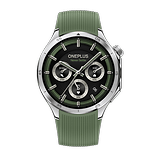
OnePlus Watch 3: All deals
Beautifully Crafted Smartwatch
From the moment you lay eyes on the Watch 3, you immediately understand—this is a beautifully crafted smartwatch. Every detail demonstrates meticulous attention to design and premium materials, giving it a distinctly high-end feel. Its distinctive form factor particularly stands out; it’s instantly recognizable and won’t be mistaken for any competitor’s model. The strap attachment mechanism follows the industry standard, ensuring that even users new to OnePlus smartwatches will find it intuitive.
A particularly elegant touch is the inclusion of analog-style time fractions around the frame. These subtle yet thoughtfully integrated details reinforce that, at its core, this device remains a watch.
However, the Watch 3 isn’t without its drawbacks. It’s noticeably heavier than many competing models, primarily due to its substantial 631 mAh battery. While this extra weight may not bother you in daily usage, it becomes evident during intense activities like cycling. Once you begin to sweat, the device tends to slide on your wrist, prompting you to tighten the strap—potentially leading to discomfort over extended periods.
Compared to its predecessor, OnePlus has clearly recognized the value smartwatch users place on functional crowns. With the Watch 3, the rotating crown is no longer merely decorative; it’s fully integrated into the navigation experience. This enhancement proves particularly useful during outdoor workouts, in winter conditions, or during water sports, where touchscreen navigation can be cumbersome.
One notable limitation is the watch’s size. Designed primarily for those with larger wrists, the Watch 3 comes only in a single 47 mm variant and weighs 81 grams. It specifically caters to users—typically men—who prefer larger, more substantial devices.
On the display front, the Watch 3 truly excels. Boasting a peak brightness of 2,200 nits, the readability is exceptional under any lighting condition. Colors appear vibrant, and UI elements remain crisp and easily legible. However, this high-quality display significantly impacts battery life.
While OnePlus has incorporated an ingenious hybrid interface to optimize power efficiency (more on this below), enabling the Always-On Display (AOD) noticeably impacts battery life. According to OnePlus, activating the AOD reduces the device’s battery endurance by approximately two days—a trade-off worth considering.
Exceptional Battery Life
And since I already mentioned power consumption, the OnePlus Watch 3 uses a clever dual-processor, dual-OS setup to maximize battery life. It runs Google’s Wear OS 5 on the Qualcomm Snapdragon W5 Gen 1 chip for intensive tasks, and a secondary ultra-efficient BES2800 microcontroller unit (MCU) for lighter, routine tasks or idle moments. This combination lets the watch easily switch between high-power and low-power modes depending on what’s needed, ensuring optimal battery efficiency.
By shifting background and always-on tasks to the low-power BES2800 chip, the Watch 3 significantly cuts down on energy consumption. In my testing, the Watch 3 comfortably reached up to three days of regular use in normal “smart mode”. Even more impressive, when it hit 10% battery, it still squeezed out another two days in power-saving mode, totaling an amazing five days without sacrificing essential smart features.
Simply put, for a Wear OS device, these numbers are truly unbeatable!
Another standout feature: charging speed. In just 10 minutes, you can get up to 30% battery capacity. OnePlus includes a handy charger buckle in the box with a 10W capacity, featuring a USB-C port compatible with most standard cables. Plus, a USB-C to USB-A cable is also provided.
Tip: If you’d like a deeper dive into how the two chipsets behave during different activities, or the exact differences between Smart Mode and Power Saver mode, I highly recommend checking out this detailed and insightful Reddit review. The author goes into meticulous detail, making it a great resource.
Software and Compatibility
One of the best things about the OnePlus Watch 3 is that it runs on Wear OS 5, making it a great fit for Android users. According to OnePlus, the Watch 3 will receive three years of software updates—covering Wear OS 5, 6, and 7—along with quarterly security updates from 2025 to 2027.
Now, here’s where it gets a bit odd: the watch already ships with Wear OS 5, so technically, that first “update” isn’t really an upgrade. What likely makes sense is that OnePlus is referring to incremental Wear OS 5 updates—like 5.1, 5.2, 5.3, and so on—before eventually moving on to Wear OS 6 and 7.
OnePlus connects the Watch 3 to your phone through the OHealth app, which has kept the same user interface as its previous version. However, as the Watch 3 gained more features, the app adapted to support them. It’s intuitive, breaking down key metrics into a segmented analysis that makes it easy to digest. That said, it doesn’t incorporate AI-driven coaching—a bit disappointing, as I would have loved to see OnePlus’s approach to this growing trend.
On the plus side, OnePlus avoids gimmicky profiling for stats like sleep, which I actually prefer—it feels more professional and data-driven. I still don’t quite get Samsung and Xiaomi’s obsession with assigning sleep animals, but to each their own.
When it comes to the user experience on the Watch 3, I really enjoy it. Navigation is smooth and responsive, following the familiar UI patterns found on most modern wearables. The rotating crown adds a nice touch, making interactions even easier.
OnePlus provides a solid selection of native watch faces, all optimized for the dual-chip architecture to ensure power efficiency. However, I still feel that some of my favorite watch faces lack quick-access shortcuts to key features. For example, I love that I can jump straight to my last workout by tapping the workout icon on the watch face, but I can’t do the same for the step counter, calendar, or battery status—which feels like a missed opportunity.
Finally, for obvious reasons, the device is not compatible with iPhones and lacks an LTE variant. According to OnePlus, the absence of standalone internet support isn’t a design limitation but rather a matter of carrier partnerships. Telecom companies tend to prioritize wearables from Apple and Samsung, making it difficult for OnePlus to secure a deal at this stage.
I understand that this could be a dealbreaker for some, but personally, I see it in a more positive light. While there’s no conclusive evidence that low-power RF (radio frequency) exposure from a smartwatch is harmful, I prefer to minimize my exposure as a precaution—especially for long-term wear. At the end of the day, these devices spend a lot of time in close contact with my skin, even while I sleep.
Health Features and Fitness
I particularly enjoy how seamlessly this device integrates with Android phones. The hybrid hardware and system integration work flawlessly here, and the power efficiency is just the icing on the cake. But let’s be real—none of that matters if the OnePlus Watch 3 isn’t a reliable health and fitness companion, right? Let’s dive into the health features.
Heat Rate Metrics
First off, the Watch 3 now sports an upgraded PPG sensor with an 8-channel optical heart rate monitor and a 16-channel optical pulse oximeter—offering a more comprehensive overview of heart metrics.
That said, these features aren’t groundbreaking in the market, but for OnePlus, they represent a significant step forward—at least in many regions. However, in the U.S., the lack of an ECG feature is a notable drawback due to FDA regulations. Companies like Apple, Samsung, and Withings have already secured FDA approval for ECG functionality, leaving OnePlus playing catch-up. Still, progress is being made.
When it comes to heart rate accuracy, the OnePlus Watch 3 performed impressively. In my tests, its readings closely matched those from my Wahoo chest strap—comparable to the Apple Watch Series 9. So, thumbs up here! Of course, it’s important to note that my heart is considered healthy, with no abnormalities.
One thing worth highlighting is that OnePlus is a bit more generous when determining heart rate zones. For example, while my Apple Watch recorded around 14 minutes in Zone 2 during my strength training, the OnePlus Watch 3 logged 19 minutes. I mention this because I know many people place a lot of value on this metric when training.
| Comparison of Average Heart Rate Across Workouts | |||
|---|---|---|---|
| Workout Type | Wahoo Chest Strap | OnePlus Watch 3 | Apple Watch Series 9 |
| Cycling | 144 BPM | 143 BPM (-1 BPM) | 144 BPM (0 BPM) |
| Rowing | – | 137 BPM (- BPM) | 140 BPM (- BPM) |
| Running | 153 BPM | 157 BPM (+4 BPM) | 156 BPM (+3 BPM) |
| Strength Training | 134 BPM | 133 BPM (-1 BPM) | 134 BPM (0 BPM) |
Wrist Temperature Readings
The Watch 3 also includes a wrist temperature sensor that, after establishing your baseline, alerts you to any deviations. This is a perfect example of OnePlus catching up with competitors in terms of features but not fully utilizing them effectively.
Like Apple and Samsung, OnePlus missed a gigantic opportunity to attract more people who menstruate as users. The Watch 3 lacks a native cycle-tracking feature, even though it could have leveraged wrist temperature data to offer ovulation predictions when combined with menstrual cycle entries.
Unveiling the differences: Apple vs. Samsung menstrual health feature
Another missed opportunity is using temperature fluctuations to indicate potential health changes—like early signs of the flu, as Withings does. But OnePlus didn’t take that step, likely because research and implementation require time and investment. As the company begins to establish itself in the wellness space, it still has room to grow in making these features more impactful.
But to be fair, OnePlus at least acknowledges that menstrual cycles and illnesses like the flu can be potential causes of changes in baseline temperature. However, the implementation feels too generic—you have to pick one potential cause from a list of many possible reasons for a temperature fluctuation, rather than the watch offering more intelligent insights.
Sleep metrics
As with most companies invested in wearables, OnePlus offers sleep tracking metrics, showing you the duration of sleep, when it started, and when it ended—and you can optimize this by toggling Sleep Mode every night. Moreover, it provides an overview of your sleep stages, and here lies the biggest issue, in my opinion.
Although OnePlus is investing in research and development around sleep tracking and has mentioned improved accuracy in sleep metrics, this hasn’t been my experience in testing.
The main problem with the OnePlus Watch remains the so-called restorative sleep stages, namely REM and Deep Sleep. The combined duration of these stages indicates how effectively the mind and body regenerate during sleep—metrics that are essential when considering learning new skills, recovering from intensive workouts or illnesses, and similar scenarios.
However, the OnePlus Watch appears to misrepresent these sleep metrics. In my test, I compared its data to that of my Apple Watch Series 9—a trusted reference for sleep tracking—and found that, on average, the OnePlus Watch reported REM sleep values about 7 percentage points lower. Deep Sleep readings roughly 18 percentage points higher over a six-day period.
This isn’t an exact science—it’s a strict numerical comparison. Evidently, the Watch 3 struggles with accurately detecting regenerative sleep stages, a common challenge in wearable technology. It is difficult to quantify these phases accurately.
Workouts and GPS Accuracy
That said, OnePlus does have strong points in fitness tracking, offering 100 workout modes, six of which support automatic detection. For outdoor sports enthusiasts like cyclists and runners, the dual-band GPS stands out—it connects quickly and remains consistently reliable, just as I experienced with the previous model.
My testing took place in a relatively open and structured city like Berlin, free from towering skyscrapers. Yet even when cycling through more tree-covered areas, the GPS performed flawlessly.
The company also highlights 11 professional workout modes, including running. As a running enthusiast, I’ve appreciated OnePlus’s approach since testing the previous Watch generation. The system tracks fat, and carb consumption based on heart rate zones and provides detailed metrics on running posture, such as ground contact time, vertical oscillation, average stride length, running power, and more.
However, since the watch lacks proactive analysis of this data, you’re left interpreting the metrics on your own. While having access to such detailed data is helpful, it would be even better if an AI could provide actionable tips to enhance your overall running performance.
60s Health Check-In
Finally, I saved the new 60-Seconds Health Check-In for the end because it essentially summarizes everything we’ve discussed so far. It combines metrics such as heart rate, blood oxygen levels, stress, wrist temperature, sleep quality, and vascular age. I appreciate this holistic approach, especially since it suggests the crossover of health data to provide an overall health snapshot. But is it trustworthy?
I believe the device’s PPG sensor is quite accurate, but when combined with less reliable sleep metrics, the credibility of this overall health assessment is undermined. Therefore, I’d recommend taking it with a grain of salt.
Additionally, the vascular age metric measures arterial stiffness by comparing your vascular condition to standard age benchmarks, showing how your condition stacks up against typical expectations. However, as a woman, it’s not clear to me how these benchmarks apply to my gender, especially since OnePlus seems to have optimized its smartwatches mainly for men.
In short, I like the concept and user interface of the 60s Check-In, but I remain skeptical about the relevance of the data provided.
OnePlus Watch 3 Key Specs
| OnePlus Watch 3 | |
|---|---|
| Display |
|
| Sensors |
|
| Chip | |
| Operating System | |
| Memory |
|
| Battery | |
| Connectivity |
|
| IP Certification |
|
| Materials |
|
| Dimensions and weight |
|
| Colors |
|
| Compatibility |
|
Should You Buy the OnePlus Watch 3?
The issue with the OnePlus Watch 3 is straightforward: It’s a consumer smartwatch designed for general users. For those who prioritize outdoor sports, the five-day battery life is a significant advantage. However, the watch lacks advanced outdoor sports features found on devices like Garmin—which also deliver excellent battery performance.
For women, especially those with smaller wrists, this watch is simply too large. Additionally, it misses an important opportunity by not accounting for hormonal fluctuations related to menstrual cycles, limiting its usefulness for deeper health insights. That said, rumors suggest that OnePlus is working on a native cycle tracking feature.
Considering these two significant segments—sports-focused users and women, both major demographics in the wearables market—OnePlus falls short. Does it provide a solid workout experience? Yes, but so does Amazfit, which offers a more specialized product range for athletes and adopts a more inclusive approach to health tracking.
Also read:
You might argue that Amazfit lacks compatibility with Google services. That’s true. However, Mobvoi and Google Pixel devices both offer that. Samsung Watches also provide this compatibility, although it’s optimized mainly for Galaxy device users.
By now, my main issue with the OnePlus Watch 3 should be clear: although it’s a solid device that could inspire the next generation of smartwatches, the very features that make it a strong all-around option also limit its appeal within the broader wearable market.
To be blunt, the OnePlus Watch 3 is made for a specific type of user. If you prefer larger smartwatches, use an Android device, prioritize long battery life, and don’t need LTE connectivity or menstrual cycle tracking, you’ll likely appreciate this watch—especially if you already own a OnePlus phone. In fact, if you have the OnePlus Watch 2 (review), trading up to this model would be a worthwhile move—you won’t regret it.
Where to Buy the OnePlus Watch 3
The OnePlus Watch 3 is available for pre-order in the United States directly through the official OnePlus website for $329.99. Due to a typographical error on the device—where “Made in China” was misprinted as “Meda in China”—the initial release has been delayed until April 2025.
Those who pre-order can save $30 by using the code TIME1010 at checkout. Additionally, OnePlus offers a $50 credit when trading in an eligible device. If you’re interested in the latest version, these pre-order deals provide a great opportunity to save on the OnePlus Watch 3.

